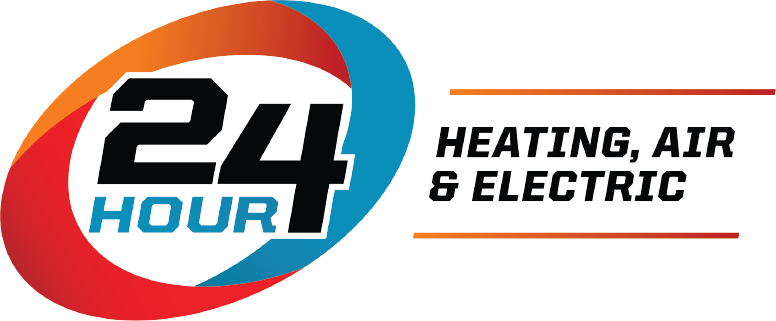Install a Heat Pump and Save with Tax Credits and Rebates
Putting in a heat pump is an intelligent and effective method for heating and cooling your residence while utilizing tax incentives and rebates. Understanding the requirements for eligibility, the advantages, and how to apply can assist you in maximizing these savings. 24 Hour Heating, Air and Electric is here to guide you through this process.
Is Your Air Conditioner or Heat Pump Eligible for a Federal Tax Credit?
Not every air conditioner or heat pump is eligible for federal tax incentives. To qualify, the equipment needs to adhere to certain energy efficiency requirements established by the government. Typically, these criteria are defined by the Energy Star® program, which approves appliances and systems that are energy-efficient.Eligibility Criteria
- Energy Efficiency – Your air conditioning must meet or exceed the Energy Star requirements for efficiency. This usually involves specific Seasonal Energy Efficiency Rating Ratio(SEER) and Heating Seasonal Performance Factor(HSPF) ratings.
- Installation Date – The installation of the equipment must occur within the tax year for which the credit is being claimed. For instance, to qualify for a tax credit in 2024, the heat pump needs to be installed during that specific calendar year.
- Qualified Property – The installation must take place in your primary residence, as secondary homes and rental properties generally do not meet the eligibility criteria for these credits.
What Are The Benefits of Installing a Heat Pump?
Heat pumps offer numerous advantages that make them an attractive option for homeowners:- Energy Efficiency – Heat pumps are recognized for their exceptional energy efficiency, which can lead to substantial savings on utility expenses. They operate by transferring heat instead of producing it, rendering them more efficient compared to conventional heating and cooling systems.
- Cost Savings – Alongside the reduction in your energy expenses, you may also take advantage of numerous tax credits and rebates. These financial incentives can help mitigate the upfront costs associated with the purchase and installation of a heat pump, thereby rendering it a more economical choice.
- Year-Round Comfort – Heat pumps serve the dual purpose of heating and cooling, ensuring consistent comfort throughout the year. They effectively cool your residence during the summer months and provide warmth in the winter.
- Environmental Impact – Heat pumps are considered eco-friendly because they consume less energy and lower greenhouse gas emissions.
- Low Maintenance – Heat pumps, having fewer components than conventional HVAC systems, necessitate less maintenance. This characteristic can result in reduced maintenance expenses and a decrease in repairs throughout the unit's operational life.
Applying for a Heat Pump Tax Credit or Rebate Process
The application process of applying for tax credits or rebates can seem daunting, but it can be straightforward if you have the right information. Here is a step-by-step guide to help you through the process.- Research and Purchase – Start by researching heat pumps that qualify for federal tax credits and local rebates. Make sure that the model you choose meets the required energy efficiency standards. 24 Hour Heating, Air and Electric can assist you in selecting the right heat pump for your home.
- Professional Installation – Have your heat pump installed by a licensed professional. Proper installation is critical to ensure the system operates efficiently and reaches the eligibility criteria for tax credits.
- Collect Documentation – Collect all receipts and documentation related to the purchase and installation of your heat pump. Include the Manufacturer’s Certification Statement, which verifies that the equipment meets the necessary efficiency standards.
- Fill Out Tax Forms – For federal tax credits, you need to complete IRS Form 5695 and submit it with your tax return. This form calculates the Residential Energy Efficient Property credit, which you can then apply to your federal taxes.
- Apply for Rebates – Check with your state, local government, and utility companies for available rebates. Each program may have different application processes, so be sure to follow the specific instructions and provide all required documentation.
Heat Pump Pros and Cons
Pros:
- Energy Efficiency – Heat pumps can be up to four times more efficient than traditional heating systems.
- Cost Savings – Reduced energy bills and eligibility for tax credits and rebates.
- Year-Round Use – Provides both heating and cooling.
- Environmentally Friendly – Lower carbon footprint.
- Low Maintenance – Fewer mechanical components mean less frequent repairs.
Cons:
- Upfront Cost – Higher initial purchase and installation costs compared to traditional HVAC systems.
- Climate Limitations – May be less efficient in extremely cold climates without a supplemental heating system.
- Installation Requirements – Requires professional installation and proper sizing for optimal performance.
How Do I Apply?
Applying for tax credits and rebates involves a few key steps:- Verify Eligibility – Confirm that your heat pump meets the required energy efficiency standards and that it was installed within the eligible time frame.
- Gather Documentation – Collect all necessary paperwork including purchase receipts, installation invoices, and the Manufacturer’s Certification statement.
- Complete Tax Forms – For federal tax credits, fill out IRS Form 5695. Attach this form to your tax return and submit it to the IRS.
- Submit Rebate Applications – Contact your state, local government, or utility provider to find out about available rebates. Complete any required applications and provide supporting documentation.
- Consult a Professional – If you have any questions or need assistance, consider consulting with a tax professional or contacting 24 Hour Heating, Air and Electric. Our team is here to help you every step of the way.
